|
Everything is Awesome
(Alt er fantastisk)
It had to happen. Two of Denmark’s leading exports are to combine in an attempt at world domination which will surely sweep all before it, for I can exclusively reveal that later this year’s biggest blockbuster movie will be The Lego Killing.
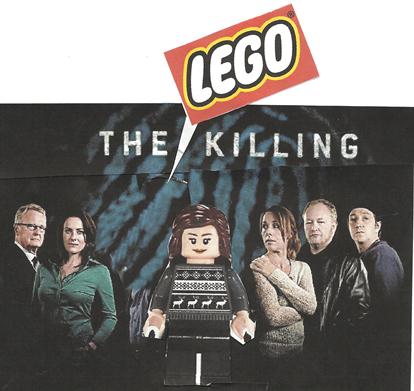
Combining the suspense and tension of this year’s truly awesome Lego Movie with the slapstick humour and charm of three series of the television epic The Killing, the movie cannot fail to smash all box office records, feature in next year’s Oscars and surely be the centrepiece of Nordicana 2015. I understand that Executive Producer Barry Forshaw is already researching yacht rental in Cannes.
From the Eastern Front
Next year’s Essex Book Festival will have to go some to top this year’s stunning programme of events, in which crime writers past and present featured prominently, which is just as it should be.
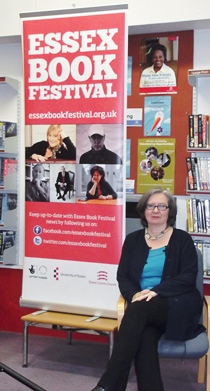
Natasha Cooper gave the annual Dorothy L. Sayers lecture in Witham Library (only a few feet from Dorothy Sayers’ home) and captivated her audience with a shrewd analysis of how the author had portrayed the dominance of women by cruel, often murderous, men.
I myself had the pleasure to talk about another Essex crime writing legend, Margery Allingham, to a sell-out audience in Great Baddow (only a dozen miles from Margery’s home in Tolleshunt D’Arcy).

It was an educational experience for me as I was able to meet members of the audience who were, as children, residents of D’Arcy and who had actually known Margery. It also gave me the chance to thank Roger Johnson, who produced the marvellous map for my new book Mr Campion’s Farewell which features Allingham’s legendary Golden Age hero Albert Campion in the completion of a story begun by her husband, Pip Youngman Carter, in 1969. Being something of an authority on Campion (as well as a distinguished Sherlockian), Roger – in true gentlemanly manner – offered to do the map for the Golden Age fee of ‘a guinea’.
Now for younger readers, a guinea was one pound and one shilling (£1.05p) and after some searching on eBay I was able to present Roger Johnson with exactly that, made up of two ten shilling notes and two sixpences which actually cost me far more than £1.05.

Storm Warning in a D-Cup
That tireless vigilante of electronic media, Jeremy Duns – a sort of Chief Inspector of the Twitter Police – has discovered (or so it was reported in The Guardian and therefore must be true) several previously unknown Jack Higgins titles published as eBooks by the intriguingly named Dark Hole Press. And when I say these novels are unknown, I mean unknown even to Jack Higgins, the veteran thriller writer best known for The Eagle Has Landed.

Spot the real Jack Higgins
You might have thought that even the average Amazon Kindle downloader would have noticed that titles such as His Boss’s Wife and His Best Friend’s Ex-Wife were not exactly in the Jack Higgins mould of action-packed, rip-roaring thrillers. But you would be mistaken.
One Amazon ‘reviewer’ complained of Ex-Wife, describing it as: a disappointing book that is unworthy of such a great writer, though he still gave it a three star rating!
Taking a leaf out of the Twitter Police’s handbook, I tracked down what else the same reviewer had reviewed. It does not appear that the gentleman in question is a great reader, but among the products he has recently bought on Amazon, he has raved about the CD of Westlife’s Greatest Hits (five star rating) and also the Kiniki Charmer black boxer shorts he bought recently, which he described as “very sensuous”.
Card Sharps
Comic crime writing is tricky. It involves having an editor and readers with the same sense of humour. When it comes to comic crime writing in translation, another sense of humour comes into the equation; that of the translator.
Of course as someone whose novels have failed to be successfully translated into American (though the Japanese seemed to like them), I suppose I am not one to talk and it was with some trepidation that I approached Game For Five [Europa World Noir] by Italian crime writer Marco Malvaldi of whom I had heard good things. (Not the least being that his books were admired by Andrea Camilleri, no less.)
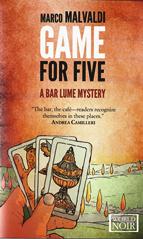
Game For Five is the first in Malvaldi’s series of mysteries set in and around the Bar Lume (the name is a play on ‘flicker of light’), a local watering-hole on the coast of Tuscany somewhere between Pisa and Livorno. It’s the sort of bar where things can get heavy over a game of briscola (an unfathomable card game to the casual observer) and the ‘regulars’ are four old-timers with an unquenchable thirst for village gossip, only kept in order by Massimo Viviani often known just as Massimo the Barman.
Naturally, this motley crew get involved in a murder case, which Massimo finds time to solve in between his barista duties and telling his customers, in no uncertain terms, what they should eat and drink irrespective of what they desired or indeed had ordered.
The book, the bar, all the locals (who will surely become regular cast members) and the setting are all charming and clearly described with great affection. Most of the jokes come off in translation as far as I can tell, though I’ve certainly missed a few. There’s a nice swipe against tourists when a body is found in a parking lot, it is reported to the police as ‘the parking lot by the pine woods where the Germans go for picnics….the one where the Germans go. Yes, for picnics’. But even the hero’s grandmother, or rather her cooking, doesn’t escape: ‘Grandma Tilde had always cooked everything on the basis of a single immovable parameter: it hasn’t been fried enough yet.’
Read Game For Five sitting in a deck chair on the front at Bournemouth with a flask of tea and you might just feel as if you’re soaking up the Tuscan sun with nothing more to worry about than your next choice of gelato.
Strike a light; it’s another Bryant & May
I suspect there are very few of the younger, non-smoking generation who appreciate the names (Arthur) Bryant and (John) May as chosen by Christopher Fowler for his very quirky detective duo, who form the backbone (even if it’s a bit rheumatic these days) of the wonderful Peculiar Crimes Unit. That however, does not handicap the popularity of the Bryant & May series, of which the eleventh instalment, The Bleeding Heart, has just been published by Doubleday.
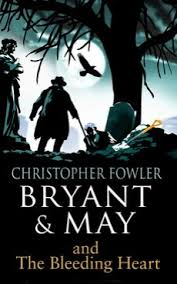
As always, Chris Fowler puts his knowledge of, and love for, strange nuggets of London history and folk lore to the best possible use, giving us also his film buff’s eye for an opening scene. In the case of The Bleeding Heart, that involves a cemetery at night, a pair of teenager lovers and a body arising in true Hammer Horror tradition from a coffin.
My favourite bits of this charmingly Gothic series, though, tend to be the descriptions of the working practices of the Peculiar Crimes Unit, its cats and its oddball complement of staff. Take this for example, from the new book:
“Bryant had a routine. Builder’s tea, never café latte. Paperwork, never computer screens, Scribbled sketches, illegible addenda, manuals and manuscripts, ink stains and gnawed pencil stubs. A pipeful of something grown under his desk and dried out on the bathroom radiator whenever he could sneak it in. This was how he liked to work, seated opposite the same familiar friendly face, surrounded by the bookmarks of his soul.”
Not only is that a little gem of prose, but I find it strangely familiar. It was almost as if Christopher Fowler was looking over my shoulder observing my own daily routine…
Party Time
One of the highlights of the social calendar is always the Orion Authors’ Party held this year in the Royal Opera House. It was a lavish affair, though sadly few of Orion’s galaxy of crime-writers seemed to be present. Still there were literally hundreds of interesting people to mingle with but, as usual, the paparazzi were on hand to record any indiscretions.
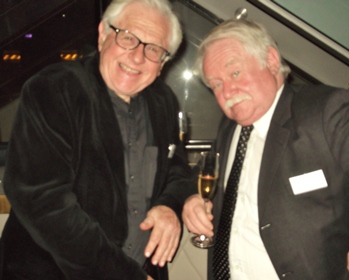 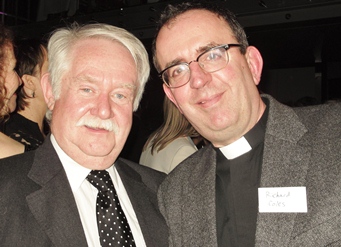
Not that there were any indiscretions when I caught up with my old and distinguished friend and Times crime fiction critic Marcel Berlins, nor when I met the former Communard and now the man who makes Radio 4 cool, the Rev Richard Coles.
Nor, I’m sure, were there any when Shots editor Mike Stotter swapped notes on the state of crime fiction with über agent Jane Gregory nor when suave man-about-town Chris Simmons was spotted with the vivacious Pavla Safratova of Goldsboro Books.
 
There probably were a few, I have to admit, when I renewed my acquaintance with Dave Myers and Simon King, better known as The Hairy Bikers, although they revolved entirely around the best ways to cook oxtail.
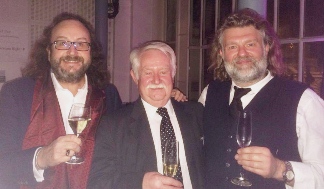
Oxford Blues
Those Golden Age crime buffs at the British Library have been at it again, publishing very attractive reissues of crime novels I have never heard of. This month the featured author is Mavis Doriel Hay (1894-1979) whose entire output of crime novels, all three of them, have been rescued and reprinted in the British Library’s Crime Classics series.
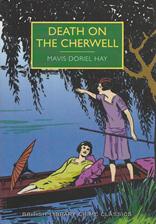
One title in particular caught my eye, the 1935 novel Death on the Cherwell set around the fictional (all female) Persephone College, Oxford. Interestingly, the novel was published in the same year as Dorothy L. Sayers’ rather more well-known story Gaudy Night, and in his introduction, crime writer Stephen Booth points out that whilst Sayers’fictional ‘Shrewsbury’ College was based largely on Somerville, which Dorothy attended, ‘Persephone’ College is recognisable as St Hilda’s, whose alumnae include P.D. James and Val McDermid and which is thehome of the famous annual crime and mystery conference.
For legal reasons I have never attended a St Hilda’s conference, but I know Stephen Booth has been one of their more memorable speakers in the past and I suspect that his support for the novels of Mavis Doriel Hay (other titles are Murder Underground and The Santa Klaus Murder) will mean that the new British Library editions find their way into this year’s convention’s goody bags – if indeed they have goody bags.
It’s a Broad Church – Official
When I was ever asked how I could possibly like and admired the legal comedies of Sarah Caudwell and, say, Thomas Harris’ Silence of the Lambs, my answer would always be that crime writing, thank goodness, was a broad church. Well now that’s official, or will be in August when Sphere publish ‘the official novel’ of the hit television drama Broadchurch, by Erin Kelly.

I have to admit that I was not among the 9 million viewers who saw the series when it aired last year, though I cannot think why I did not as I admire the actors who took part and know the location (West Bay in Dorset) very well. The series was certainly recommended to me, often by complete strangers, not only here but also in France where it proved to be the most-watched television show there in the last three years. Soon travelling to America will likely be intolerable as an American version, Gracepoint, is due to air soon (also starring David Tennant I believe) with fans badgering and berating me for my lack of viewing knowledge. If only there were some way one could somehow ‘catch up’ with missed television without having to devote entire week-ends to box sets of DVDs…which reminds me, Series 2 of Breaking Bad awaits my attention.
|
|
Dire Straits
By which of course I mean the Strait of Gibraltar but I am sure I will be unlikely to find anything dire in Thomas Mogford’s new novel Hollow Mountain, which Bloomsbury publish later this month.
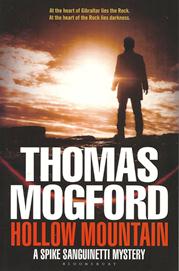
In two previous outings, Thomas Mogford sent his lawyer/sleuth hero Spike Sanguinetti to various parts of the Mediterranean, all lovingly described and keenly observed, and indeed Hollow Mountain begins in Genoa. The action soon moves, however, to Gibraltar which is Spike’s base and the hollow mountain of the title.
I have always said that if you can’t manage a holiday in the Med, then read a Thomas Mogford book. If you do intend to holiday there, take one with you.
Hot-Desking
I am delighted that my little homily on ‘hot-desking’ last month and the subsequent nine-page internal Memo seem to have been taken to heart by the Shots staff. In a noble attempt to curb spiralling office overheads, many members of staff have taken my advice and are utilising the work space and facilities provided by a host of conveniently-placed ‘public houses’ around the capital.
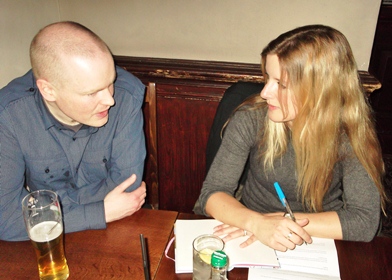
One of the first to put my new management guidelines into operation was Shots reviewer Laura Skippen, interviewing debut Irish author Andrew Hughes about his historical mystery The Convictions of John Delahunt in a fashionable West End hostelry.
Arctic Bound

I prophesied last year that it was only a matter of time before the cult of ‘Nordic Noir’ crime fiction expanded to involve the peaceful Faroe Islands, which have a population equivalent to roughly half that of Eastbourne, but are probably twice as lively.
Well it has now, with the publication next month by Simon & Schuster of The Last Refuge by Scottish crime writer Craig Robertson.
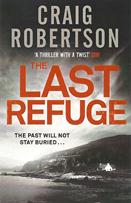
And the insatiable hunger of publishers for even more northerly crime fiction has now extended to Lapland with the publication this week of Forty Days Without Shadow (from Little Brown’s Trapdoor imprint) by French journalist Olivier Truc. By Lapland, I am assuming the book is set in the Finnmark area of northern Norway where the murder of a reindeer herder provides the debut case for detective duo Klemet Nango and Nina Nasen.
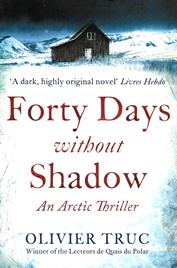
Irish Eyes
Two years ago I felt I was the only crime writer in Christendom not to be asked to contribute to the crime fiction guidebook Books To Die For, edited by Irish authors John Connolly and Declan Burke.
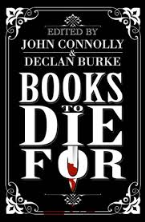
I automatically assumed that my thoughts on and recommendations of crime novels were deemed to be surplus tothe requirements of the editors of such a distinguished volume. Quite coincidentally I have just received review copies of new novels by both the editors, both of which are published this month: John Connolly’s The Wolf in Winter from Hodder, and Declan Burke’s Crime Always Pays from Severn House.
 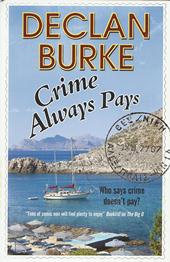
Also coincidentally, I am sure, there are wolves in both books. Okay, to be accurate, John Connolly has a wolf, whilst Declan Burke has a ‘wolf/husky combo’ – neither of which comes out of their guest appearances intact.
With The Wolf in Winter Connolly is on very familiar territory, literally, giving us another gruesome guidebook tour of the backwoods of Maine where isolated communities (in this case descended from religious outcasts from Northumbria) make their own laws and maintain order with help from something supernatural. It falls to private eye Charlie Parker and his go-to assassins Louis and Angel, with the help of assorted other allies, to root out the evil underpinning the town of Prosperous with fire and sword – well, fire and bullets.
Although die-hard Charlie Parker fans (the private eye, not the saxophonist) may be disappointed that their hero plays a rather subdued role in the final third of the book, there is no doubt that John Connolly can spin a good yarn when it comes to what one might call ‘Gothic Noir’. Few writers have mastered the knack of mixing horror and crime and achieved a wide popularity. I can think of Dennis Wheatley and John Blackburn, but few others.
Declan Burke’s Crime Always Pays describes itself as ‘screwball noir’ and owes quite a lot to the double and triple cross plotting of an Elmore Leonard and the black humour of a Carl Hiaasen. There are so many guns mentioned I thought at first the setting must be Detroit and so many movie references (almost every page) that it might be Hollywood, but in factthebungled kidnap/ransom/heist which kicks off a chaotic European road trip takes place in dear old Ireland.
Rapid cross-cutting between half-a-dozen main characters (plus a one-eyed wolf/husky wearing an eye-patch) makes the opening a tad confusing, but there are some excellent jokes along the way, not the least concerning a get-away driver who suffers from narcolepsy, the career prospects for glamour models in Ireland and a really good way of fleeing the country in plain sight as a newly married bride wearing a tiara!
Italian Historical Jobs
BBC4 has established a solid reputation for imported crime drama, making Saturday evenings a stay-in-and-watch-television diary date for the Chattering Classes, with offerings from Sweden, Denmark, Italy, Belgium and France (especially the outstanding Spiral).

For the next four weeks the sub-titled crime drama slot will be filled by Italian detectives not only solving crime but also coming to terms with the fascist past of Mussolini’s dictatorship, in Inspector De Luca.
Set in Bologna and cross-cutting between the final years of WWII and the period immediately before, the series is based on the Inspector De Luca books by Carlo Lucarelli, with which I have to admit I am unfamiliar.
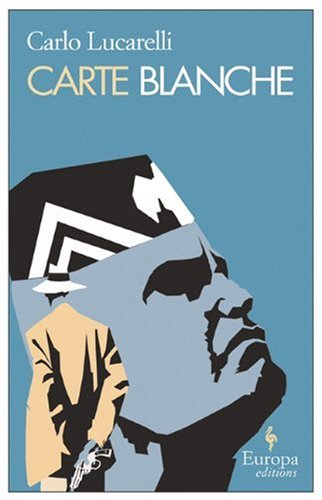
I am, however, very familiar with the work of another Italian who has chosen the war years as a setting for her crime fiction: Ben (Verbena) Pastor, one of the stars of last year’s Chianti Crime Festival.

Unlike Lucarelli’s Inspector De Luca, Ben Pastor’s detective hero is not Italian, but a German aristocrat – Wehrmacht Major Martin von Bora – whose fabulous debut, investigating the death of a saintly nun in Nazi-occupied Poland, Lumen, took an incredible 12 years to find an English publisher, the astute Bitter Lemon Press. Bora’s second case, in occupied Italy, Liar Moon, took only 11 years but after another 12-year gap, the third in the series, A Dark Song of Blood, set in Rome in 1944, appears once again thanks to Bitter Lemon Press.
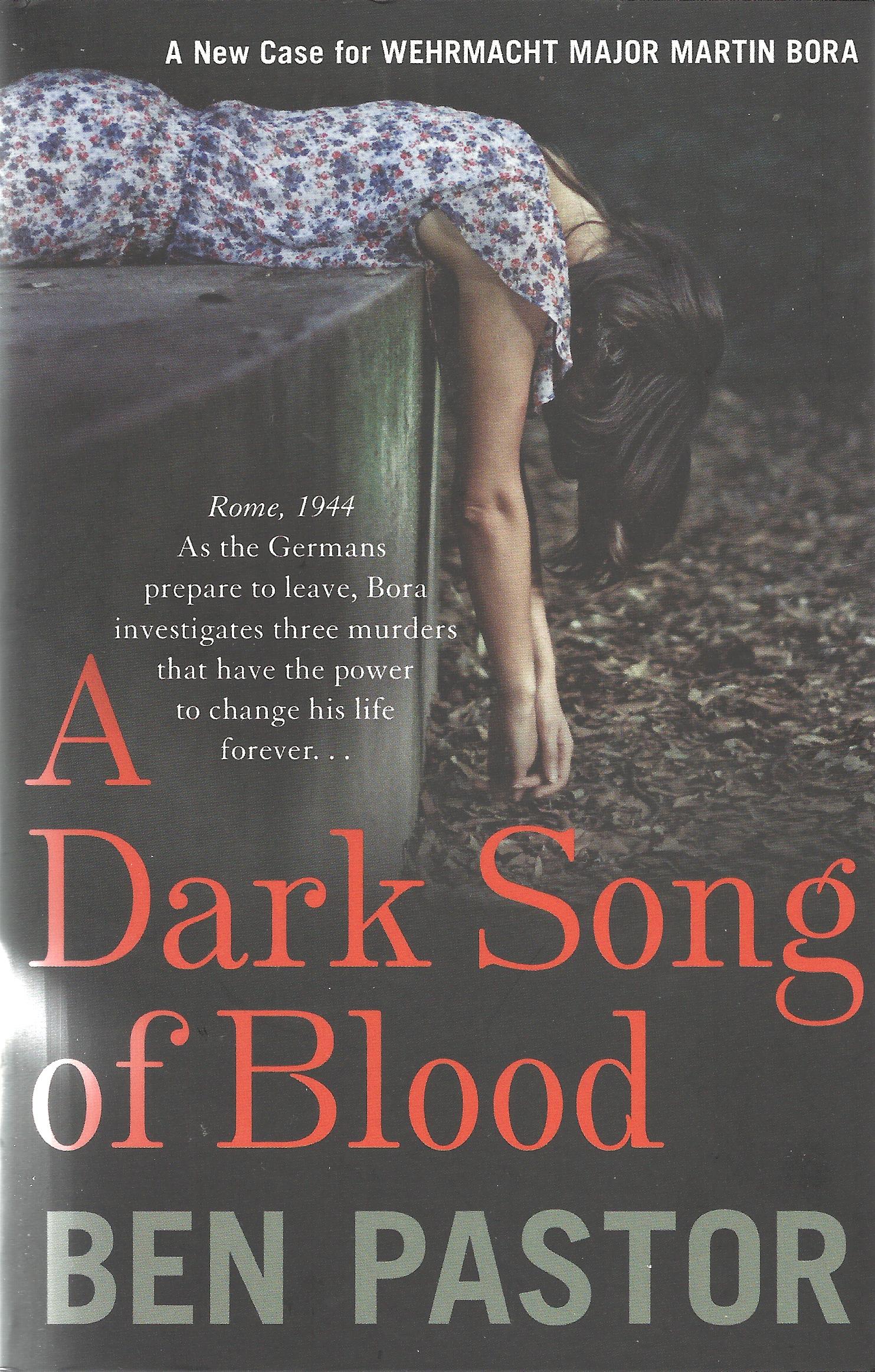
Martin von Bora, a figure clearly inspired by Count Claus von Stauffenberg, is a fascinating character – crippled both physically and morally by the horrors perpetrated by the Gestapo and the SS in the name of the country he still cares for. In A Dark Song of Blood, Bora has to team up with the reluctant Italian Inspector Guidi to investigate the suspicious death of a secretary at the German embassy despite a stone wall of internal politics and corruption and the fact that outside the walls of Rome the Allies are advancing, the Wehrmacht is retreating, Italian partisans are on the offensive and German reprisals are bloody and infamous.
The Martin Bora series is a remarkable achievement and bears comparison (although different) with the Bernie Gunther books of Philip Kerr. There are more in the series still to be published in the UK, but please don’t make us wait so long for them.
Thursday Child
It is absolutely fitting that Nicci French’s new novel is published by Penguin on 10th April as that’s a Thursday. Fitting, because its title is Thursday’s Children and it is the fourth in their highly successful series featuring psychotherapist Frieda Klein.
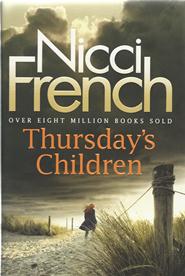
Although famed for plots which follow the course of London’s legendary River Walbrook, heroine Frieda Klein actually grew up in Suffolk, where her creators – husband and wife team Nicci Gerrard and Sean French – have the sense and good taste to live. As the latest rumour from the publishing world tells me that last year they outsold Jeffrey Deaver, I suppose they can live anywhere they like.
One book already out from The Friday Project (an imprint of HarperCollins) is Anya Lipska’s Death Can’t Take A Joke.
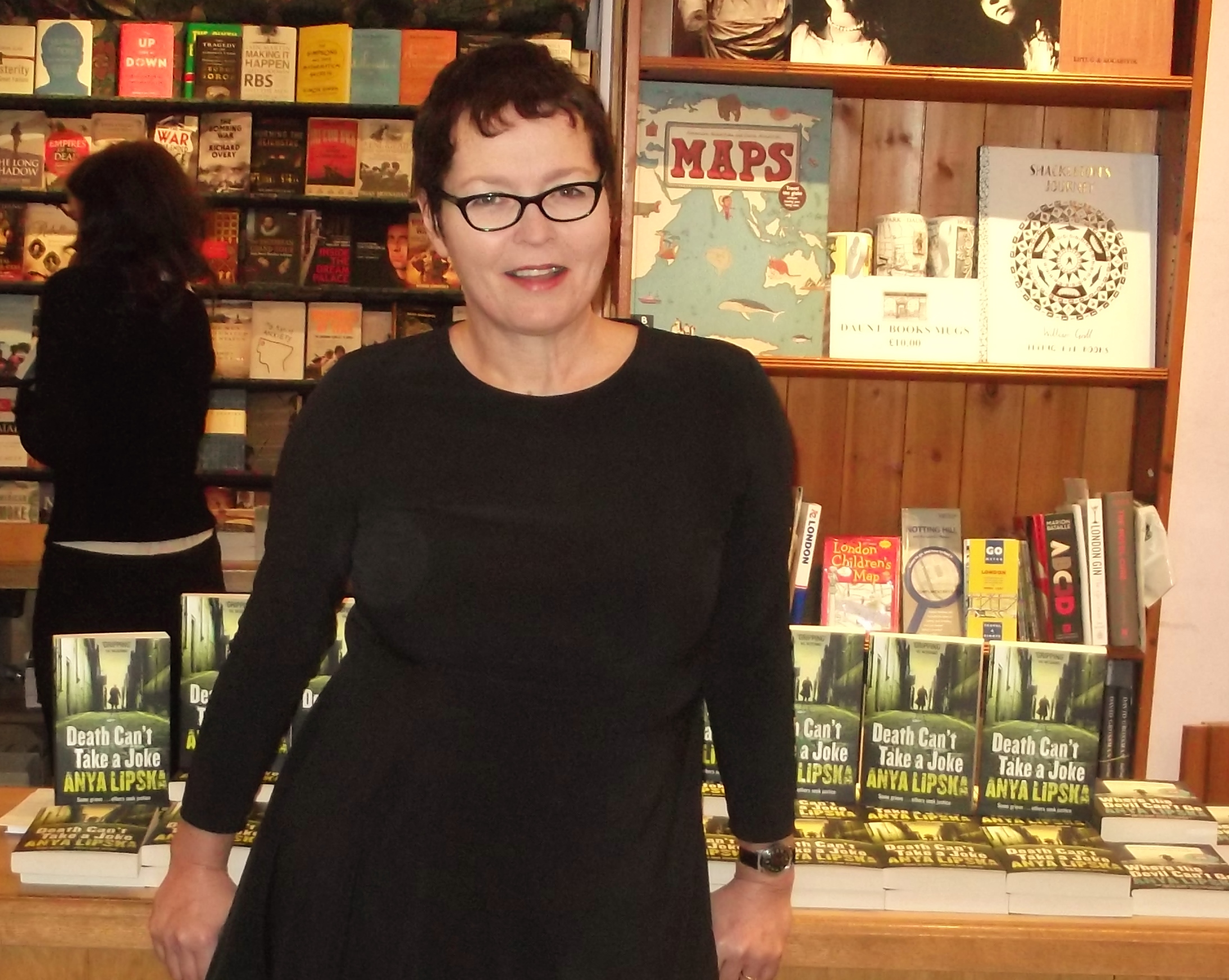
Anya launched her second novel to feature the Polish private eye/rookie police detective combo Kiska and Kershaw, in the leafy suburbs of Holland Park in the cultured surroundings of Daunt’s Bookshop.
Spoiler Alert!
The new Alan Furst spy novel, Midnight in Europe will be published by Weidenfeld on 12th June.
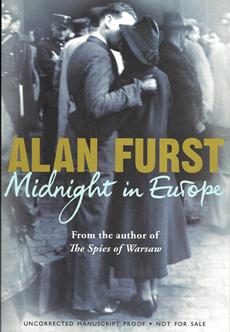
I’ve already read it. It’s very, very good.

Evenin’ all,
The Ripster.
|